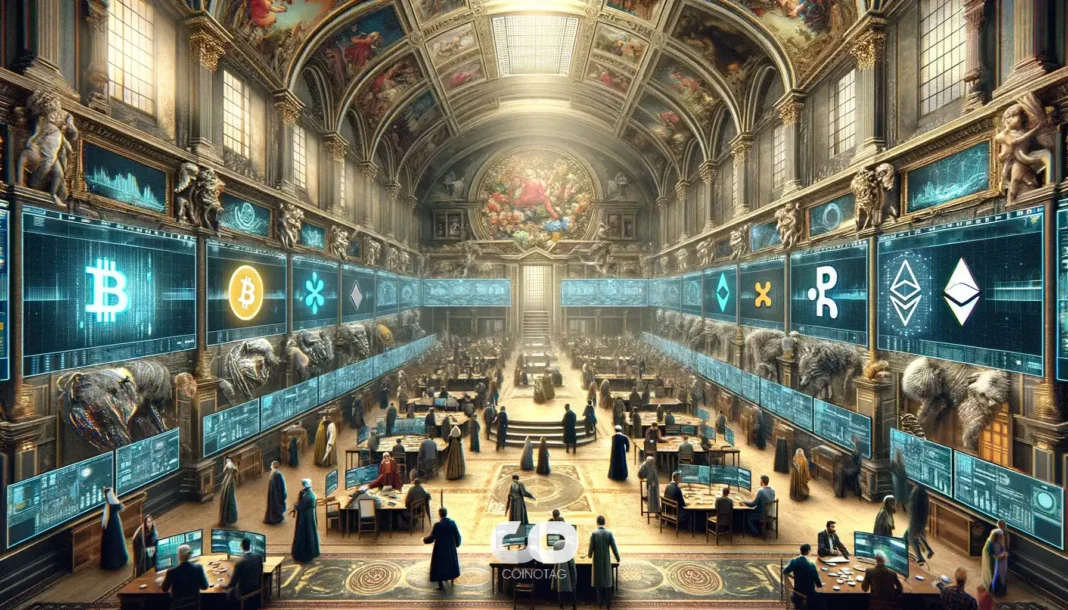-
Ethereum is set to undergo a transformative upgrade called “The Verge,” aimed at significantly lowering hardware requirements for running nodes, potentially enabling operations on everyday devices such as smartphones and smartwatches.
-
This innovative upgrade is backed by Ethereum co-founder Vitalik Buterin, who has shared insights into how it will enhance security and accessibility across the network.
-
In a recent blog post, Buterin highlighted the notion of “stateless verification,” stating, “This will make fully-verifying the chain so computationally affordable that every mobile wallet, browser wallet, and even smart watch is doing it by default.”
Learn about Ethereum’s game-changing upgrade “The Verge” that aims to simplify node operations by dramatically minimizing hardware constraints, making it feasible for common devices.
The Verge: Redefining Node Accessibility and Efficiency
The upcoming Ethereum upgrade, known as The Verge, is a critical initiative that seeks to address one of the network’s most pressing challenges: the ever-increasing data size necessary to operate a node. Currently, users require hundreds of gigabytes of state data, which limits the ability for broader participation in network validation. Instead of following the traditional path, The Verge will introduce a transformative concept called stateless verification, allowing nodes to verify blocks without the need to hold the entire blockchain.
Understanding Stateless Verification: The Future of Node Operations
The primary benefit of stateless verification is the reduction of technical barriers for everyday users. As stated by Vitalik Buterin, this enhancement could lead to a scenario where mobile wallets, browser wallets, and even smartwatches can conduct full verification seamlessly. By not requiring the storage of vast amounts of data, Ethereum aims to democratize access to its network. This pivotal shift could encourage more individuals to engage in validating transactions, thereby strengthening the overall security and decentralization of the network.
Innovative Solutions: Verkle Trees and STARKs
Buterin outlined the significance of Verkle trees in relation to The Verge. These cryptographic structures are instrumental in reducing proof sizes and facilitating stateless validation. However, he also pointed out a critical vulnerability: “Verkle trees are vulnerable to quantum computers, and so if we replace the current KECCAK Merkle Patricia tree with Verkle trees, we will later have to replace the trees again.” This insight has led to the consideration of Scalable Transparent Arguments of Knowledge (STARK)-based binary hash trees, which promise better security in a quantum-resistant context.
Gas Cost Revisions: The Role of Multidimensional Gas
Another facet of The Verge’s development is its proposed adjustments to Ethereum’s gas cost structure under Ethereum Improvement Proposal (EIP)-4762. This initiative will incorporate a multidimensional gas approach, allocating gas fees based on distinct resource demands like calldata, computation, and state accesses. Such a change is essential for maintaining both network scalability and security while reducing the operational complexity for smaller devices. The improvements underscore Buterin’s vision of promoting solo staking as a more viable option for users.
The Road Ahead: Implications for Ethereum and Its Users
The Verge upgrade embodies a critical evolution for Ethereum, potentially reshaping how users interact with the blockchain. By prioritizing accessibility and efficiency, Ethereum aims to enhance participation rates among users who previously might have considered node operation too daunting due to technical requirements. This upgrade may serve as a catalyst for broader adoption, allowing the network to support even greater scale in the future.
Conclusion
In conclusion, Ethereum’s The Verge upgrade represents a significant step toward making blockchain technology accessible to a wider audience. By implementing strategies like stateless verification and revising gas costs, the upgrade aims to evolve the infrastructure necessary for node operations, ultimately fostering increased participation and security within the Ethereum ecosystem. As the upgrade progresses, it will be vital for developers and the community to navigate these innovations carefully to ensure long-term viability and resilience against emerging threats, particularly in the context of quantum computing.






